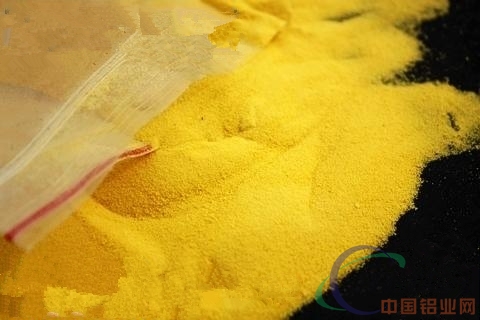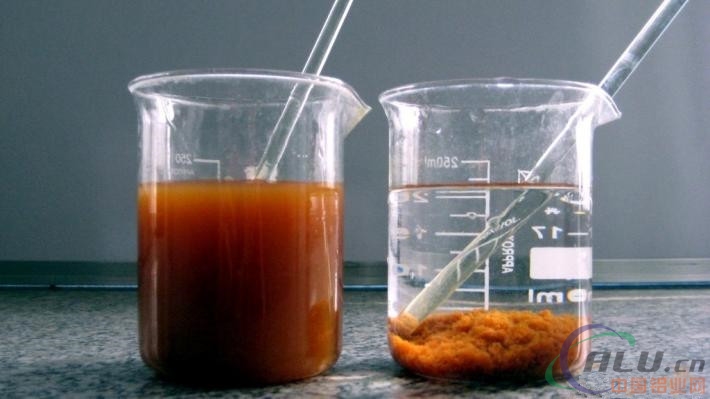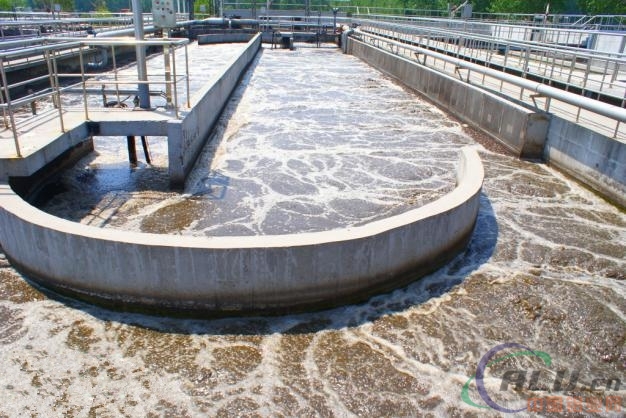ã€China Aluminum Industry Network】Polymeric aluminum chloride, English name PAC, is a kind of water purifying agent. In recent years, because of the low price, stable quality, outstanding effect, simple use, convenient transportation, etc., gradually replacing the traditional coagulant products such as aluminum sulfate in the urban water supply and sewerage purification in China. China is currently vigorously advancing energy conservation and environmental protection policies, and has intensified efforts to rectify urban sewage treatment. In the future, China will invest 650 billion yuan in succession. It can be said that the cost-effectiveness of polyaluminum chloride in sewage treatment will have a very broad market prospect in the future.

Polyaluminum chloride manufacturing method

There are many methods for the synthesis of polyaluminum chloride. According to the different raw materials, they can be divided into metal aluminum method, active aluminum hydroxide method, aluminum trioxide method, aluminum chloride method and so on.
Metal aluminum method This method is used to synthesize polyaluminum chloride mainly using aluminum processed scrap, such as aluminum scrap, aluminum gray and aluminum slag. The aluminum ash is slowly added with hydrochloric acid under stirring at a certain ratio to carry out the reaction. After aging polymerization and precipitation, the liquid polyaluminum chloride is obtained, which is then diluted and filtered, concentrated, and dried. In the process can be divided into three kinds of acid, alkali, and law. Acid method is mainly used HCl, product quality is not easy to control; alkali production process is more difficult, equipment investment is larger and the amount of alkali is used, pH control costs raw materials, the cost is higher; more used is the neutralization method, as long as A good control of the ratio can generally meet the national standards.
The aluminum hydroxide aluminum hydroxide powder has a relatively high purity, and the synthetic polymeric aluminum chloride and other heavy metals have low toxic substances, and the production process of heating and pressure acid dissolution is generally adopted. This process is relatively simple, but the polyaluminum chloride produced has a low degree of salt radicality, so generally the aluminum hydroxide is used for warming and pressurizing the acid solution and adding the calcium aluminate mineral powder to neutralize the two processes.
Tri-alumina method The raw materials containing alumina are mainly gibbsite, alumina, kaolin, coal gangue and so on. The production process can be divided into two steps: the first step is to obtain crystalline aluminum chloride, and the second step is to obtain polyaluminum chloride by pyrolysis or neutralization;
The aluminum chloride method uses aluminum chloride powder as a raw material to process polyaluminum chloride. This method is more common. Crystallized aluminum chloride can be used for boiling pyrolysis at 170 °C, adding water ripening polymerization, and then curing, drying obtained.
The alkali dissolution method first reacts aluminum ash with sodium hydroxide to obtain sodium aluminate solution, and then adjusts pH value with hydrochloric acid to obtain a polyaluminum chloride solution. The product obtained by this method has a better appearance of color and less insoluble water, but has a high content of sodium chloride, a high consumption of raw materials, a low content of alumina in the solution, and a large industrial production cost.

Performance of Polyaluminum Chloride The performance of polyaluminum chloride is approximately eight types, depending on the type of purification, the water quality is better than that of aluminum sulfate flocculant, and the cost of purified water is 15-30% lower than that. The second is that the formation of flocs is fast and the sedimentation speed is fast, which is greater than the traditional aluminum sulfate and other products. The third kind is that the alkalinity in the water consumed is lower than various inorganic flocculants, so that the alkali agent can be omitted or dispensed. The fourth kind: The source water PH5.0-9.0 can be condensed. The fifth kind is: The corrosiveness is small, the operating condition is good. Sixth: solubility is better than aluminum sulfate. Seventh kind: Less salt increase in treated water is beneficial to ion exchange treatment and high purity water production. Eighth: The adaptability to the source water temperature is better than inorganic flocculants such as aluminum sulfate.
From the aspect of product cost, effect and long-term, no other coagulant can surpass polyaluminum chloride, and its future will inevitably become the “main force†in the process of water purification in urban China.
Morphological classification of polyaluminum chloride The morphology of polyaluminum chloride is further divided into two types. The former species is a liquid polyaluminum chloride, not in a dry form, with no dilution, convenient loading and unloading, and relatively inexpensive price. The disadvantage is that transportation requires a tanker and the unit transportation cost is increased (2 ton of liquid per ton of solid equivalent The second type is solid polyaluminum chloride, which has a dried shape and has the advantage of convenient transportation. It does not require tankers. The disadvantage is that it needs to be diluted to increase the work intensity.
The current situation of producing polyaluminum chloride in China China has abundant raw materials to produce polyaluminum chloride, and there are many production routes. The raw materials used in China are mainly based on local conditions to develop and use their own mineral resources. China's polyaluminum chloride was originally made of aluminum ash as raw material. Due to the low cost of aluminum ash and the concise production process, the production process began to spread rapidly in 1970. However, polyaluminum chloride produced from aluminum ash has a lot of impurities and was not used for tap water purification after 1980. At the beginning of 1980, China's polyaluminium chloride production materials mainly used clay minerals, kaolin minerals, and bauxite minerals. In addition to iron content, other indicators of the product can reach advanced foreign standards. In the early 1990s, raw materials used in China have gradually shifted to aluminum hydroxide. In addition, some manufacturers use aluminum chloride and metal aluminum as raw materials.
Now, domestic technology has approached or reached the international advanced level. Polyaluminum chloride production method is many, according to the process can be divided into acid, alkali, neutralization, pyrolysis, pressure reaction, mixed gel, electrodialysis, electrolysis and so on. The solid product is obtained by spray drying or drum drying the liquid product. Spray drying is an ideal drying method and is suitable for large-scale production, while drum drying is also feasible for small-scale production enterprises.
Use of polyaluminum chloride

The use of polyaluminum chloride can be many, such as urban water purification: river water, reservoir water, groundwater. Industrial water purification. Urban sewage treatment. Recovery of useful substances in industrial waste water and waste slag, promotion of settlement of pulverized coal in coal washing wastewater, and recovery of starch in starch manufacturing. A variety of industrial wastewater treatment: printing and dyeing wastewater, leather wastewater, fluoride wastewater, heavy metal wastewater, oily wastewater, papermaking wastewater, coal washing wastewater, mine wastewater, brewing wastewater, metallurgical wastewater, meat processing wastewater, sewage treatment. Paper sizing. Sugar refinement. Casting molding. Wrinkle-free cloth. Catalyst carrier. Refined medicine. Cement quick-setting. Cosmetic raw materials.
Summarizing the current situation of polyaluminum chloride is undoubtedly very much in line with current needs. In the global shortage of water resources, severe water pollution and the emphasis on the sustainable development of water resources, sewage is treated with polyaluminum chloride to achieve sustainable water resources. To develop and solve the fundamental problems of China's water problems.
Heshan Janno Kitchen and Bath Technology Co.,Ltd , https://www.janno-ks.com